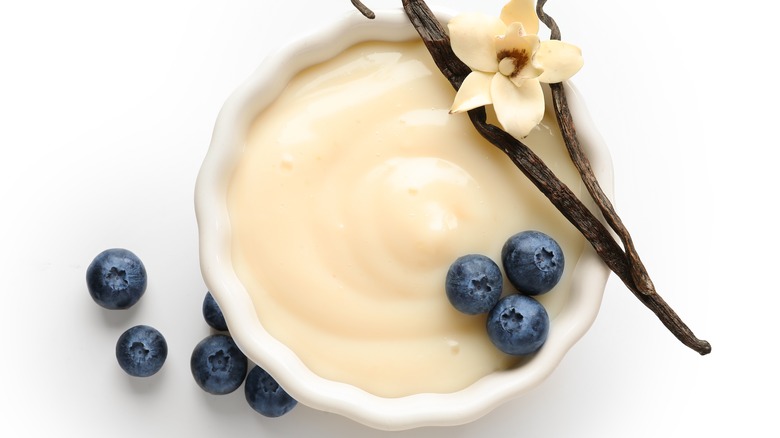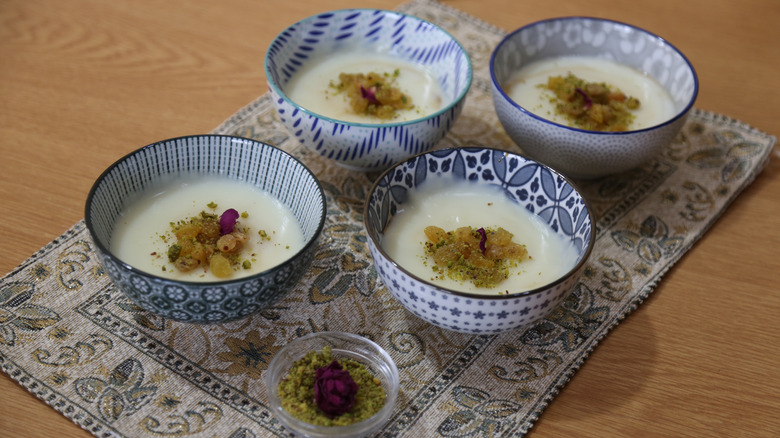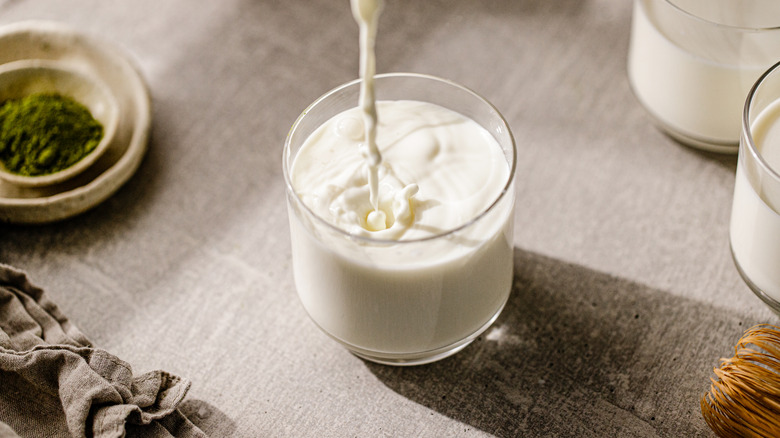What Exactly Is Milk Pudding, And What Does It Taste Like?
It is entirely possible, if vanishingly rare, for a dessert to be both dead simple and utterly elegant. Such is the case with milk pudding, which at most contains a handful of ingredients: milk, sugar, some kind of thickening agent (usually cornstarch), and a flavoring agent like vanilla extract or rosewater. That's it. Those minimalist cooks out there who delight in the uncluttered already know — even if they've never made it before — that the quality of milk pudding's ingredients (in particular its namesake, milk) is paramount to a successful dish.
Milk pudding is usually served chilled. It's creamy and rich but with neither the egginess of flan nor the butterfat density of ice cream. The thickener gives it a silkiness also not found in those other two desserts. The pudding's taste can be described as lightly sweetened whole milk essence, or maybe spoonable hugs, or simply home. It's likely that the ingredients for making milk pudding are sitting in your refrigerator and pantry right now. For such a humble concoction, this dish has quite the pedigree.
Mahalabia, milk pudding's ancient ancestor
Milk pudding appears to have originated in Persia sometime during the 7th century — although in a somewhat different form. A 13th-century Andalusian recipe for a dish called mahalabia contained a proto-custard of milk, sugar, and eggs (so far so good), which topped layers of minced meat and breadcrumbs. At some point, mahalabia became the meatless dessert enjoyed today, made from whole milk, sugar, cornstarch, and rosewater — often garnished with things like chopped pistachios and sliced fresh strawberries.
From Persia, milk pudding made its way into Europe and Asia: The English simmer milk, sugar, and rice and serve the result hot or cold; cooks in Helsinki use corn- and rice-flour thickeners; Filipinos traditionally made their maja blanca with coconut milk and corn; the Japanese thicken their beloved jiggly milk pudding with gelatin and indulge in a wide variety of toppings; while Canadians are cool with simple garnishes like powdered cinnamon and raisins. What's clear is that every culture treats milk pudding like its own culinary child.
A short time in the kitchen, a long time in your heart
Since milk pudding doesn't rely on a lengthy (and finicky) process of reduction like, for example, some Indian milk-based desserts like rabri, it can be made in the time it takes to bring a saucepan of milk and sugar to a simmer, and allow the thickening agent to do its work. There's hardly any trick to this process beyond not letting the milk violently boil (the resulting scorched mess will teach a lesson not soon forgotten) and whisking in the thickener so as to avoid lumps. After that, the pudding only requires cooling and refrigerating for at least several hours or overnight (although those obsessed with "quality control" can eat a serving at room temperature).
So, that's milk pudding — a dessert that is as simple as it is durable. It's astonishing to see a dish so geographically widespread with so little variation: A testament to the pudding's divine nature, perhaps. After all, who wants to mess with perfection? Find the most delicious, grass-fed whole milk available and see for yourself.


